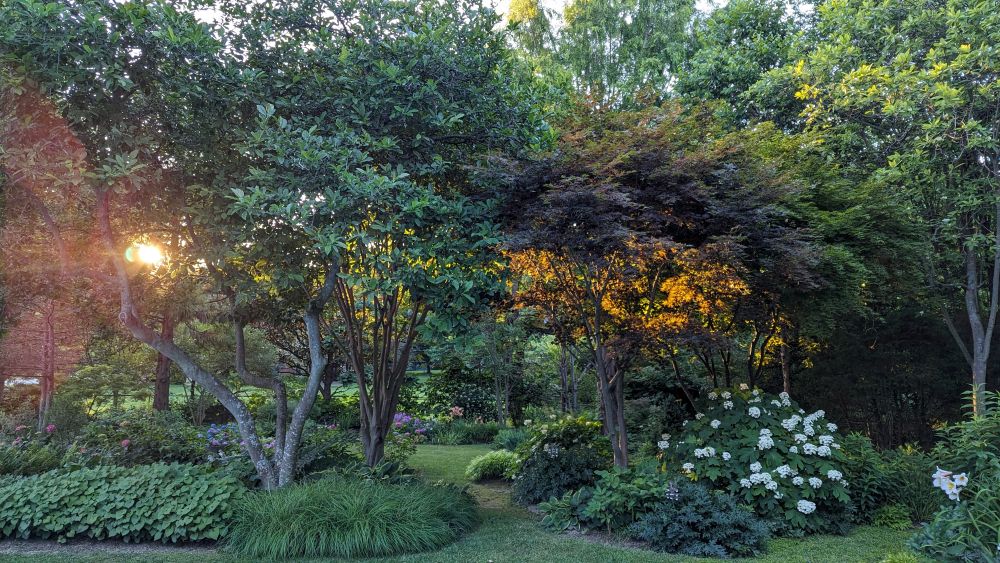
Imagine some anonymous gardener who is showing you their garden. How would you describe them? Seems an absurdly broad thing to ask, right? Because, like any group of people, gardeners are different. They come in all shapes and sizes. All genders. All races. All everything. So how can you possibly amalgamate one from such a diverse group?
But the qualifier in that sentence, “who is showing your their garden,” makes it easy. Because a gardener, any gardener, “who is showing you their garden,” is an apologetic mess.
As much time as they spend showing you the best parts of their garden, they spend even more calling attention to the worst. They’re making excuses for errant bits of whatever you wouldn’t have otherwise noticed. They’re explaining why something didn’t get done. They’re reaching down and pulling weeds you didn’t even see. They’re telling you about a plant that died two years ago. Once, I was visiting a gardener when, practically in tears, she blurted, “I’m sorry you had to see that.” As if it were a dead body. Thinking about it now, I can’t even remember what it was that I had to see, but I’m certain it wasn’t a dead body. What I do recall is the awful burden of guilt she divulged. Memorable. Impressive!
But as much as gardeners fret about the current state of their gardens, what will happen to their gardens after they’re gone worries them even more. We put so much heart and soul, energy and wisdom, dollars and sense into our gardens that the thought of them gradually declining, or, worse, getting mowed down and turfed over is impossible to accept. Yet, we’ve all seen it happen. Over and over.
I know of several friends who have seriously considered bequeathing their homes to young gardeners they hope will carry it on for at least another generation. I’m constantly sharing divisions of my coolest plants with younger gardeners with the hope that the more they are out there, the better the odds they will always be out there.
I’ve been thinking more and more about the future of my own garden. Being as realistic as I can get, I’m actually fairly optimistic.
When I was younger and dumber, and perhaps serendipitously prescient, I brought in truckload after truckload of fieldstones. These were used to create topography and to build walls that defined spaces and paths. Along with trees I planted, this rescripted how the garden is seen. It transformed a rectangular paddock of grass into hills and valleys, nooks and alleys, and one small, sunny glade. The outside border was lost to a tangle of trees, shrubs, and vines I added and so was any semblance to the surrounding typical suburban lots. And now, with many years giving all of it greater size and weight, everything looks like it has always been there. And belongs there. Now, and forever.

This path between two rock walls looks like it’s been there a million years. Who would even think of removing it?


These Japanese maples are now large enough to appear as long time components of the landscape. And they’re beautiful.
Because of this, I believe it would take a level of imagination that most prospective home buyers haven’t got to see it as the long, sloping lawn it once was. Therefore, folks who aspire to spending a great portion of their short lives mowing grass would be all but certain to pass on my house.
On the other hand, it might appeal to those wanting a woody, shady retreat. And even if the new owner couldn’t handle maintaining the understory of shade-loving perennials and replaced them with groundcovers, the general look and feel would remain. And that, I feel, is about all a mortal gardener can hope for.
The front yard, I’ve come to accept, is very likley a goner. Sunny and flat, those big, billowing, and quickly weedy perennial beds would all but beg a buyer to go purchase a big sack of Kentucky 31. This, despite the low, dry-stacked wall along the road. Even the most unimaginative could easily envision a sea of turf lapping up against its full length. Maybe, the idea of small mulch rings under the two framing magnolias will occur to them.

The front garden that won’t survive a new owner. Too hard to garden. Too easy to mow.

Hidden behind the pernnials, this wall probably isn’t enough to make the beds indespensable. It can stay even if they go and still look nice.
I think the key to subliminally imposing one’s garden down through future generations is to make it intuitive to see and do. Include durable elements like trees, walls, paths, and raised beds that are easy for anyone to tend and appreciate but hard to raze and haul off.
And, by all means, include beauty. Big, dumb, crowd-pleasing beauty. The kind even normal people will see and want.
If you do all that, and if it’s enmenshed into the landscape deeply enough, then, hopefully, it will be impossible for any new owner to even conceive of bulldozing it to oblivion. In fact, the very idea of even letting such a landscape atrophy or decline on their watch should bring about guilt. Tremendous guilt. A biblical kind of guilt. The type of guilt that can make a person say something like, “I’m sorry you had to see that.”
Imposing Our Gardens on Future Generations originally appeared on GardenRant on March 22, 2025.
The post Imposing Our Gardens on Future Generations appeared first on GardenRant.
